23 June, 2005
UNDER CONSTRUCTION
Installing the 3SGTE
These parts don't appear in my copy of the Electronic Parts Catalog (EPC), so I don't know what Toyota calls them.
The left- and right-hand side cushions are shaped differently. The right-hand side cushions have a large "L" cast into the rubber. Don't make the same mistake I did and try to use these on the "left" mount, as logic would seem to dictate!
The cushion above has a "K" cast into the rubber, and fits the left-hand mount. The concave area around the center hole fits over the isolator, and the flat side fits against the body bracket. The notches help keep the cushion aligned on the isolator. Use plenty of soapy water on the side that meets the body bracket to help things slide into position.
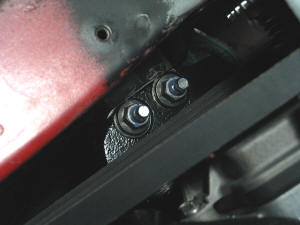
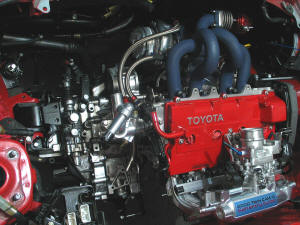
The mounting bolts were still just finger tight, so that I could easily install the front and rear mounts and then torque everything to spec.
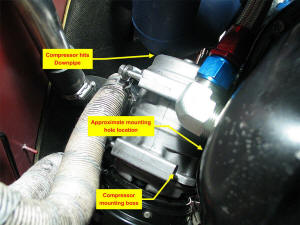
Wasn't mentioned to me when I bought the turbo kit, but that's just old news at this point.
For now, I'll remove the compressor until I find a solution.
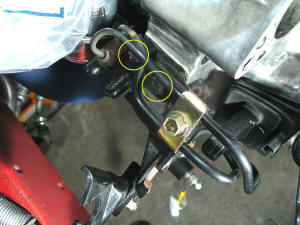
The longer bolt goes towards the left side of the car (to the right in the photo above). Just finger tight at this point.
NOTE: make sure you install the clutch rod into the slave cylinder before attaching the bolts:
I forgot the rod and had to pry the clutch lever away from the slave cylinder to slip it into position:
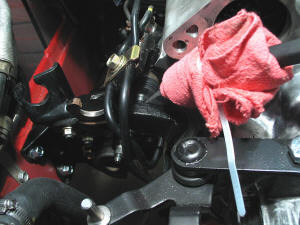
The really hard part was getting the dust boot over the slave cylinder -- no room to work once it's installed.
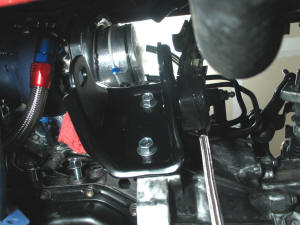
Torque these two bolts down, but be careful and remember you are working with aluminum threads on the case!
When you are done, you can tighten the two 12mm clutch cylinder bolts from the top of the motor.
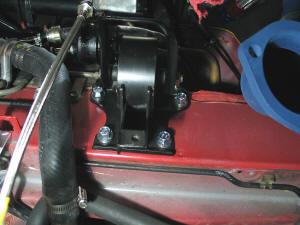
Torque these down to BGB spec.
Slide the through-bolt in place, rotating the engine as necessary, and attach the nut. Don't tighten this down yet.
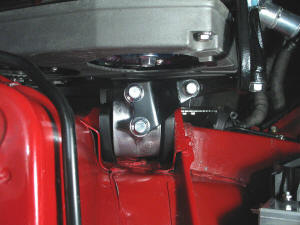
Torque these down to spec, again being mindful that two of them are threading into aluminum.
Torque the through-bolt to spec. On the underside, torque down the two 14mm nuts onto the mounting studs.
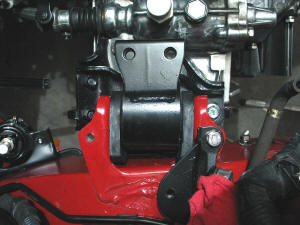
Tighten the through bolt to BGB spec.
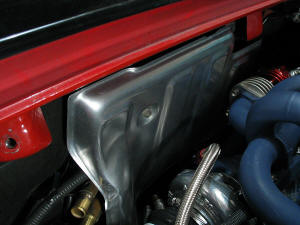
Unfortunately, the downpipe on my turbo would not clear one of the heat shield mounting studs for the smaller shield:
I had to cut about ½" off the end of the stud. And I would need to fabricate a replacement for the small heat shield, as it was designed to prevent heat from the turbo and exhaust manifold from reaching the fuel tank. Now there is a large hole there.
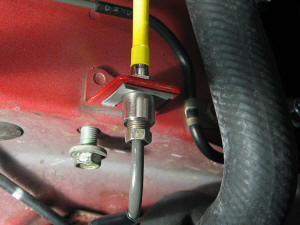
The U-clip secures the hex-shaped collar into the bracket. You'll need a 12mm flare-nut wrench to tighten the connection.
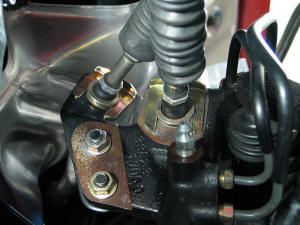
The cable on the left in the photo goes to the top pin on the shift control arm.
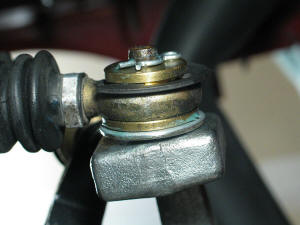
The photo above shows the lower cable end. You need to retain one of the spacing washers from the stock cable end installation. Then the bushing, the cable end, and finally the locking pin. I used a little Magnalube on the pin and bushing.
Even though the cable end appears to be slightly cocked, you'll find that the mating surface on the lever arm is cocked at exactly the same angle.
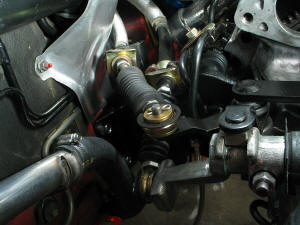
Install the the bushing, the cable end, and the locking pin, in that order.